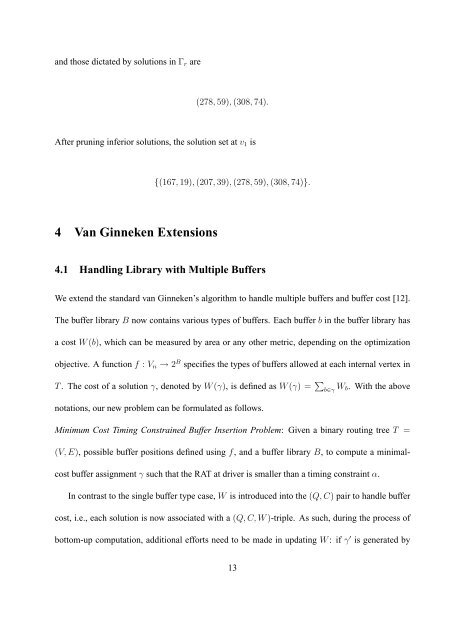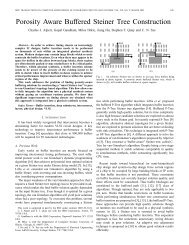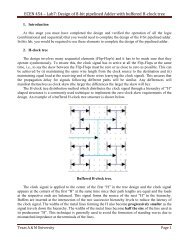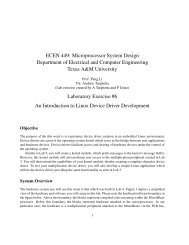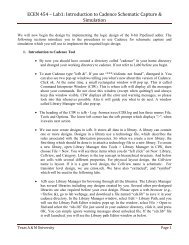Buffer Insertion Basics - Computer Engineering & Systems Group ...
Buffer Insertion Basics - Computer Engineering & Systems Group ...
Buffer Insertion Basics - Computer Engineering & Systems Group ...
Create successful ePaper yourself
Turn your PDF publications into a flip-book with our unique Google optimized e-Paper software.
and those dictated by solutions in Γ r are<br />
(278, 59), (308, 74).<br />
After pruning inferior solutions, the solution set at v 1 is<br />
{(167, 19), (207, 39), (278, 59), (308, 74)}.<br />
4 Van Ginneken Extensions<br />
4.1 Handling Library with Multiple <strong>Buffer</strong>s<br />
We extend the standard van Ginneken’s algorithm to handle multiple buffers and buffer cost [12].<br />
The buffer library B now contains various types of buffers. Each buffer b in the buffer library has<br />
a cost W(b), which can be measured by area or any other metric, depending on the optimization<br />
objective. A function f : V n → 2 B specifies the types of buffers allowed at each internal vertex in<br />
T . The cost of a solution γ, denoted by W(γ), is defined as W(γ) = ∑ b∈γ W b. With the above<br />
notations, our new problem can be formulated as follows.<br />
Minimum Cost Timing Constrained <strong>Buffer</strong> <strong>Insertion</strong> Problem: Given a binary routing tree T =<br />
(V,E), possible buffer positions defined using f, and a buffer library B, to compute a minimalcost<br />
buffer assignment γ such that the RAT at driver is smaller than a timing constraint α.<br />
In contrast to the single buffer type case, W is introduced into the (Q,C) pair to handle buffer<br />
cost, i.e., each solution is now associated with a (Q,C,W)-triple. As such, during the process of<br />
bottom-up computation, additional efforts need to be made in updating W : if γ ′ is generated by<br />
13


